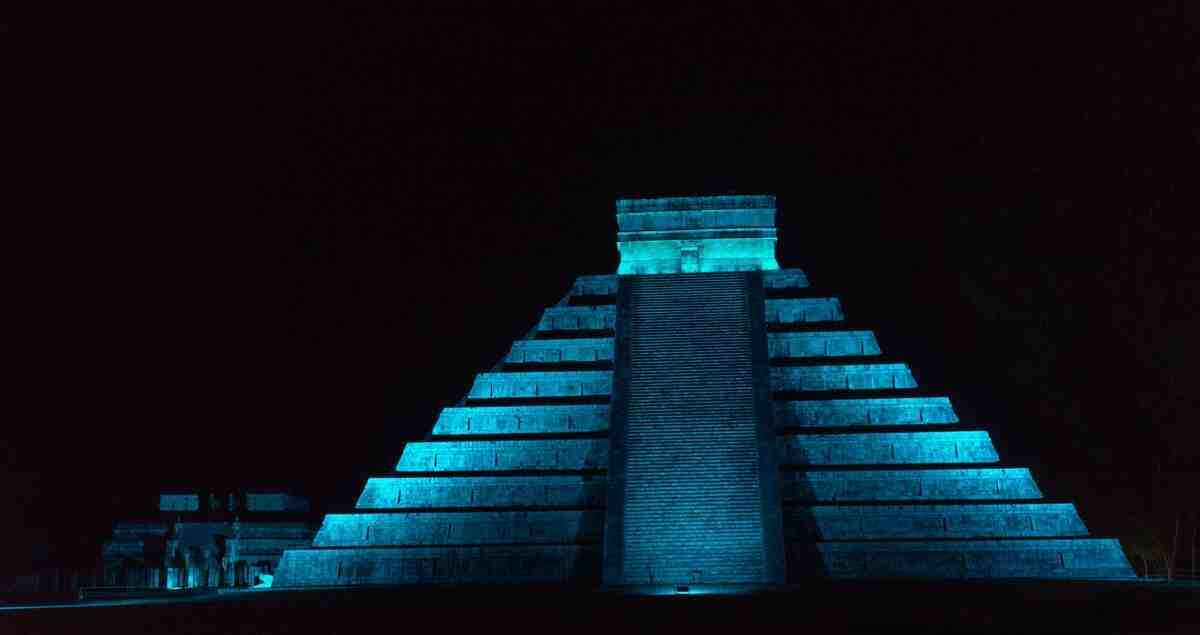
Aztec god Quetzalcoatl was represented with a serpent's head, a symbol for material goods, and a feathered body, a metaphor for spirituality. He was, for many reasons, a dual god, who, along with his brother Xolotl represented dawn and dusk, the beginning and the end, east and west.
But also, Quetzalcoatl, the Feathered Serpent, is one of the primary gods who gave life to other deities, and very important to the ancient Meso-American communities because he was the one to bring corn to man.
Who was Quetzalcoatl in Mexican mythology?
In the native language of náhuatl, quetzali means 'feather', while coatl is translated as 'snake' or 'serpent'. That's the story behind the composed name of Quetzalcoatl given to the 'feathered serpent' embodying the main divinity of Mexican mythology. For many ancient Meso-American peoples, Quetzalcoatl was the origin of many other deities.
In other variations of Meso-American mythology, Quetzalcoatl had been birthed by Ometeotl, the name used for the first pair of gods (Ometecuhtli and Omecihuatl), who give birth to the other gods in the pantheon. In any case, the feathered serpent was seen as the god of life, light, wisdom, fertility and knowledge.
The first place where worshipping of Quetzalcoatl was found was Teotihuacán in the 1st century B.C., and later on, that cult spread out, with Cholula being appointed as the main location for worshipping.
In all these places, Quetzalcoatl was worshipped as the patron for daylight and wind, ruler of the west, and under the eye of Venus. This deity is closely linked to Xolotl, his twin brother, because they're two sides to one single coin appearing in the skies in two different instances, as the morning and evening star.
The legend of Quetzalcoatl and corn
When Hernán Cortés arrived in Mexico in 1519, emperor Moctezuma thought that Quetzalcoatl had returned, because the legend around the birth and growth of the feathered serpent prophesises that he would come back.
According to Meso-American mythology, Mother Earth birthed the world, and when it wasn't inhabited by humankind yet, the dual deity of Ometeotl birthed 4 more deities among which stood Quetzalcoatl, the feathered serpent with the mission of defending the world's integrity and populating it.
In order to do that, he had to battle sea monster Cipactli with his brother Tezcatlipoca, so the god of wind ripped off one of his brother's legs to attract Cipactli with blood. When the beast was submitted, they tore it apart in two, and thus created heaven and earth. The next step was to birth 1600 deities and to decide to create humankind.
Quetzalcoatl's most well-known legend says that before the arrival of the feathered serpent, Aztec peoples fed on nothing but roots and animals, because corn lay behind a tall mountain. Priests asked Quetzalcoatl for help, and since the other gods had attempted to use force to divide the mountain but failed at it, he chose to use his wits.
Quetzalcoatl became a black ant, and along with a red ant, started on his path and overcame all obstacles that stopped him from reaching corn one by one. He took a grain of corn and brought it back for men to sow it, and since then, Aztec peoples worked on growing grains, which eventually brought them abundance.
Quetzalcoatl in Meso-American culture
Serpents and snakes are a common element in the iconography of the ancient peoples of Central America, and the feathered serpent called the attention of experts who performed comparative research, and managed to reveal the meaning of this god.
On the first location where the feathered serpent was worshipped, the Quetzalcoatl Temple in Teotihuacán, there are several feathered serpents in fully animal form, whereas it takes on a slighter human form in later periods. In Mayan times, there is a serpent offering visions of the Underworld to the local shaman.
One of the most remarkable things is that Quetzalcoatl's embodiment usually wears around his neck what is known as an ehecailacozcatl, or 'spiral wind jewel', a charm made with a shell that identifies the 'precious twin'. There have been instances of priests wearing that same necklace.
It is thought that the charm was a protection against wind, hurricanes and dust whirlwinds, and that in many places, aside from a direct link to the afterlife, shamans believed Quetzalcoatl could protect them from natural disasters.
The feathered serpent was also a protector for wisdom, and considered the creator of the book and calendar, the bringer of corn to men, and the symbol for death and resurrection. In some rituals, Quetzalcoatl is at the head of human sacrifices, while in other worship forms he is a deity against them.
As one of the main icons of Mexican mythology, the feathered serpent now remains as a recurrent theme for a Quetzalcoatl tattoo. For many people, he represents protection and power.
